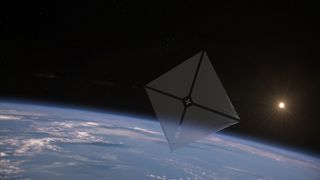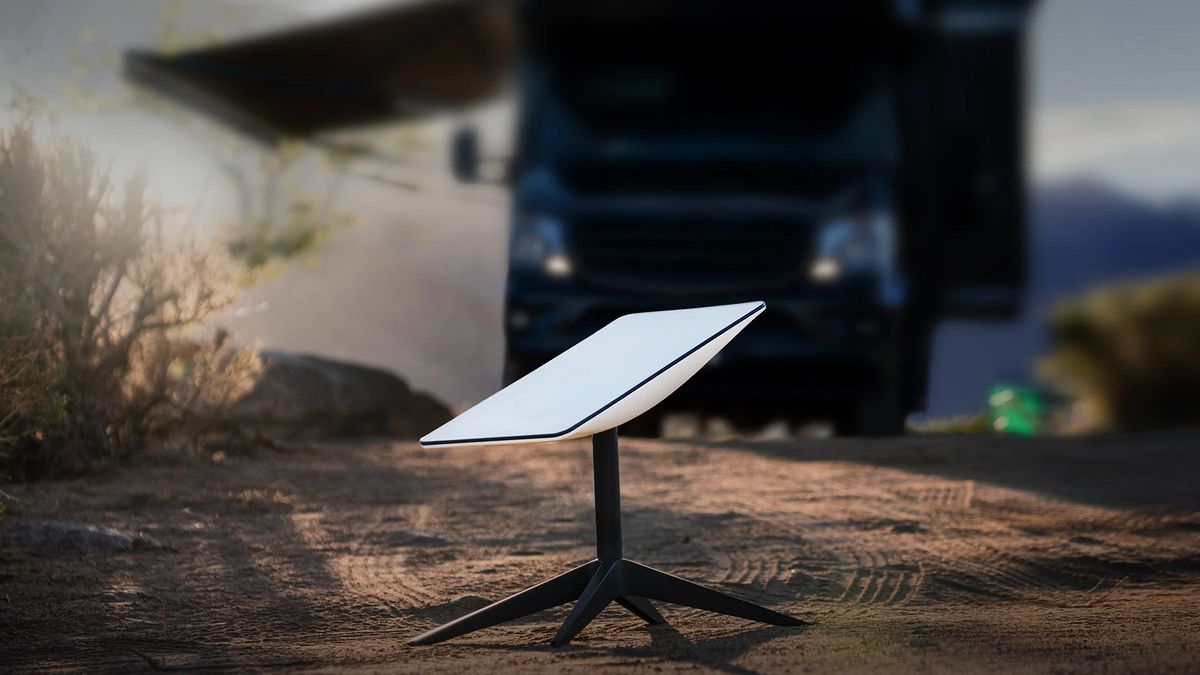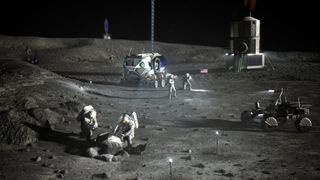Six decades after the supersonic Avro Arrow suddenly stopped flying, Canada is working hard to preserve what few pieces of it are left. The Avro Canada CF-105 Arrow (known as the Arrow among its fans) was one of the most advanced supersonic jets of its era in the 1950s. It even has a link with NASA across the border, according to the Canadian Encyclopedia. But the Arrow program’s funding was nixed in 1959 in a still-controversial decision by the Canadian government of the day, led by Prime Minister John Diefenbaker.…
Read MoreTag: Tech
NASA spacecraft captures 1st photo of its giant solar sail while tumbling in space
On April 23, NASA launched a solar sail protype to orbit around our planet — a piece of technology that could very well revolutionize the way we think about spacecraft propulsion. Then, on Aug. 29, the agency confirmed this sail successfully unfurled itself in outer space. Yet, we still didn’t have official photographic evidence of this for some time. Now, as of Sept. 5, we indeed do. NASA has released the first image of the open solar sail, formally called the Advanced Composite Solar Sail System, and stated that the…
Read More‘Unbreakable’ quantum communication closer to reality thanks to new, exceptionally bright photons
Scientists have created an “exceptionally bright” light source that can generate quantum-entangled photons (particles of light) which could be used to securely transmit data in a future high-speed quantum communications network. A future quantum internet could transmit information using pairs of entangled photons — meaning the particles share information over time and space regardless of distance. Based on the weird laws of quantum mechanics, information encoded into these entangled photons can be transferred at high speeds while their “quantum coherence” — a state in which the particles are entangled —…
Read MorePhysicists find superconductor behavior at temperatures once thought ‘impossible’
Scientists have found a key process required for superconductivity occurring at higher temperatures than previously thought. It could be a small but significant step in the search for one of the “holy grails” of physics, a superconductor that operates at room temperature. The discovery, made inside the unlikely material of an electrical insulator, reveals electrons pairing up at temperatures of up to minus 190 degrees Fahrenheit (minus 123 degrees Celsius) — one of the secret ingredients to the near-lossless flow of electricity in extremely cold superconducting materials. So far, the…
Read MoreQuantum data beamed alongside ‘classical data’ in the same fiber-optic connection for the 1st time
Scientists have successfully transmitted quantum data and conventional data through a single optical fiber for the first time. The research demonstrates that quantum data in the form of entangled photons and conventional internet data sent as laser pulses can coexist in the same fiber-optic cable. Most research into building a quantum internet has focused on the need for separate infrastructure or dedicated channels for quantum data to avoid interference from “classical” data. But this new “hybrid” network could pave the way for more efficient implementation of quantum communications by enabling…
Read MoreOrigami-inspired ‘transformer’ robots could help build habitats in space (photo)
A newly designed “transformer” robot with the ability to change shape could one day be used to build habitats in space. Engineers from North Carolina State University (NC State) have created a plastic cubed structure that can transform into more than 1,000 configurations using only three active motors. In theory, their design — which was largely inspired by the paper-folding art of origami — offers a more efficient way to send assembly structures into space, where the robot could then “transform” to serve various purposes, including carrying a load, according…
Read MoreSpaceX makes Starlink Roam available throughout the US
Your internet connection today is brought to you by space. No, that’s not an ad from a science fiction movie; it’s the reality now thanks to SpaceX‘s ever-growing constellation of Starlink satellites. In June, SpaceX introduced its new version of its satellite internet antenna, providing users the option to have an on the go service that’s the perfect size to throw in your backpack. Now, Starlink Roam is available anywhere across the United States, connecting customers in even the most remote locations with high-speed internet that can be accessed from…
Read MoreNASA wants fresh ideas for recycling garbage on the moon
With crewed Artemis launches on the horizon, NASA is searching for sustainable solutions for waste management during long-term missions on the moon. An initiative called LunaRecycle, under the space agency’s Centennial Challenges Program, aims to incentivize the design and development of recycling solutions for use on the surface of the moon and/or inside pressurized lunar habitats. The program aims to reduce solid waste streams during long duration lunar missions under the Artemis Program, as well as to improve the sustainability of future space exploration. “As NASA prepares for future human…
Read MoreDrone racing is helping train AI to autonomously drive spacecraft
We’re off to the races! The AI-driven drone races, that is. The European Space Agency’s (ESA) Advanced Concepts Team (ACT) has partnered with the Delft University of Technology’s (TU Delft) Micro Air Vehicle Laboratory in the Netherlands to train neural-network artificial intelligence systems to race drones. Ultimately, this program will test AI’s ability to handle complicated maneuvers, which could then be implemented on future space missions. (There’s a Star Wars pod racing joke in here somewhere.) Neural networks in AI mimic human brains in the way they pass along information…
Read MoreSpace radiation can damage satellites − my team discovered that a next-generation material could self-heal when exposed to cosmic rays
The space environment is harsh and full of extreme radiation. Scientists designing spacecraft and satellites need materials that can withstand these conditions. In a paper published in January 2024, my team of materials researchers demonstrated that a next-generation semiconductor material called metal-halide perovskite can actually recover and heal itself from radiation damage. Metal-halide perovskites are a class of materials discovered in 1839 that are found abundantly in Earth’s crust. They absorb sunlight and efficiently convert it into electricity, making them a potentially good fit for space-based solar panels that can…
Read More







